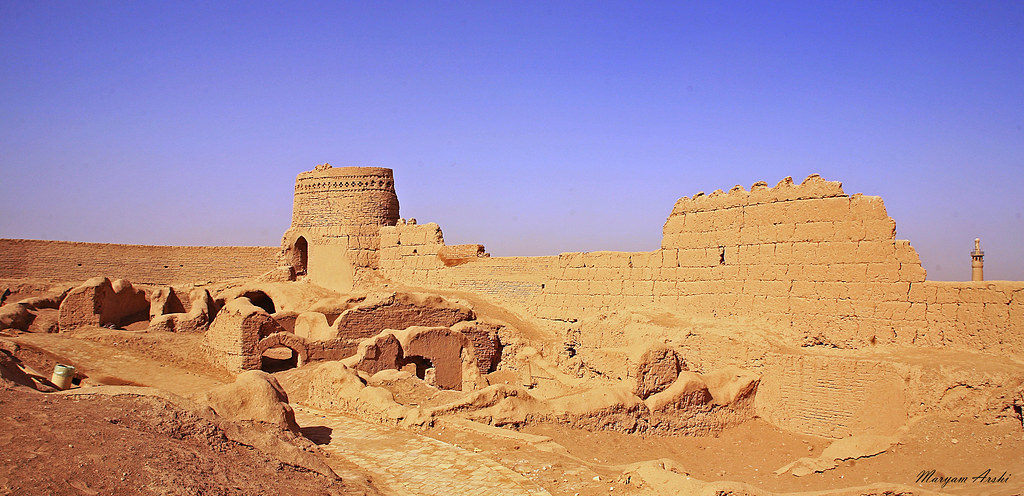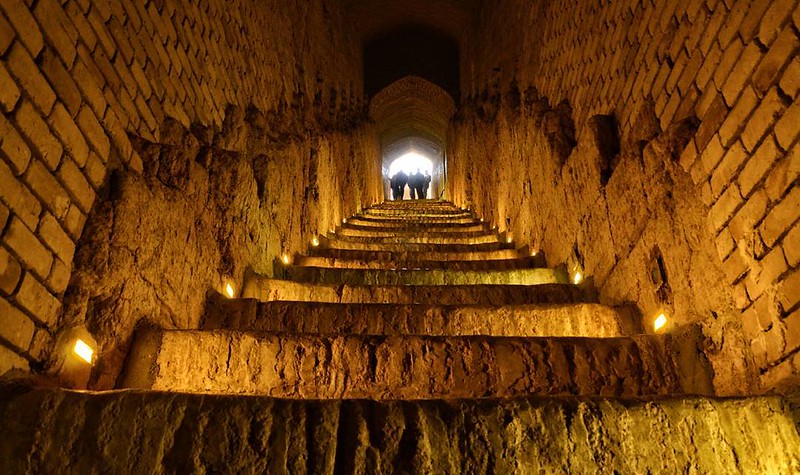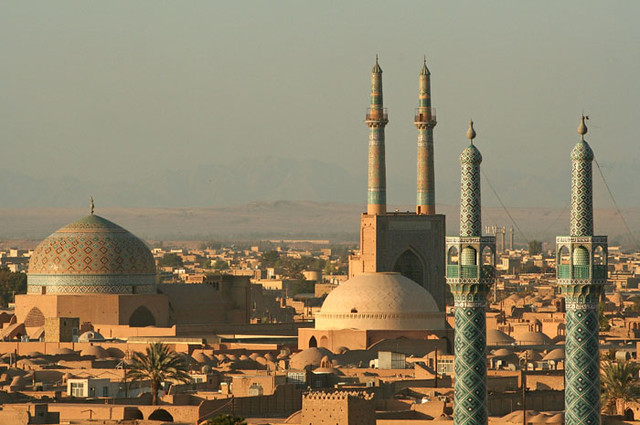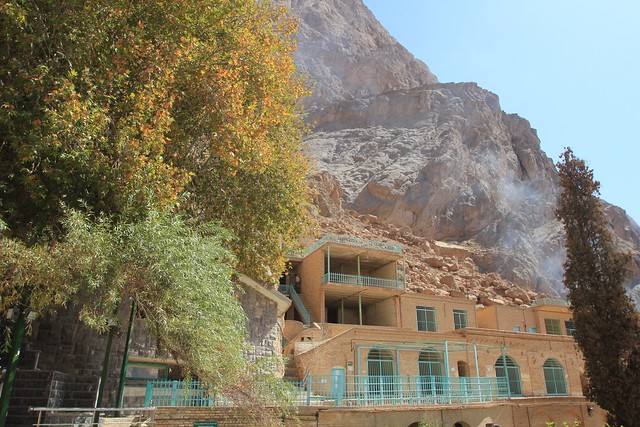Yazd is a city with an ancient history. A city that can be called "Iranian history diary". This city is the second historical city in the world after Venice, Italy, and it attracts many tourists from different parts of the world every year. Yazd can be shown to the world with its colorful history.
In this article, Ozhan agency wants to travel with you to the history of Yazd.
History of Yazd
The obtained sources date the city of Yazd earlier than the third millennium BC. The footprints of Pishdadians can be seen well in the history of Yazd.
Historians consider Yazd to be the safest historical city in Iran. The reason for this is the geographical location of Yazd, which has made it safe from natural disasters, wars and sudden historical developments.
In some historical sources, the early buildings of the important cities of Yazd have been attributed to the era of Suleiman the Prophet, Ibrahim the Prophet, Zahak and Alexander the Great.
What is particularly important among this vast volume of history is the preservation of the traditional and historical context of a significant part of Yazd, which is tied to the preservation of the culture and civilization of the people of this ancient land.
The traditional fabric of Yazd city
Yazd is the first raw clay city and its historical context is registered in the list of national monuments of the country. This unique historical context includes many old neighborhoods. Fahadan neighborhood is the oldest neighborhood of Yazd city. Other neighborhoods such as Koche Buyuk, Khorramshah, Yaqoubi, Mir Qutb, Shesh Badgiri and Sarjama are also very old neighborhoods of Yazd.
Ahed Ilkhani houses can still be inhabited in this traditional context and are very attractive for tourists.
Narin Castle

Narin Castle, which is also known as Kohandezh, is the oldest building made of clay in the world, which is located in the ancient city of Meibod, located on a high hill and overlooking the entire city of Meibod.
The word "Kohandezh" is used for the old forts that were built on top of the hills at the beginning of the creation of cities, during the Median, Achaemenid and Parthian rule.
The historical city of Meibod has the same structure as other old settlements in Iran. The three main parts of the old fortress, Sharistan and Bironeh are the constituent parts of the city. Sharistan includes residential areas that are inside the fence. Also, communication routes and gardens and public places are considered part of Sharistan. The old fortress is actually the seat of government and treasury. This part is also the last defensive bastion of the city. Narin Castle is the government citadel of the historic city of Meybod.
The area of the old fortress is about 15,000 square meters and it has an oval shape. It has different floors and is built in five fences. A deep moat surrounds Narin Castle.
Zarach aqueduct

Zarch aqueduct is located in Yazd province as the longest aqueduct in the world. A three-thousand-year-old aqueduct with a length of more than 71 kilometers and 2,115 wells have been found in it. The existence of a number of aqueduct bars in the Suleiman Mosque of Yazd indicates that the Zarch aqueduct existed before Islam and the Jame Mosque was built around it. After Islam, in order to fill the reservoir under the Jama Mosque, these bars were installed, and Muslims used qanat water for ablution through the aqueduct. It is interesting to know that this trace is still usable.
At the time of Zoroastrians, aqueducts were built with a square section. This is while other aqueducts have an oval or circular cross-section. Due to the fact that the Zarach aqueduct has a square section, it seems that the aqueduct belongs to the Zoroastrian era.
This aqueduct has three branches named Shirin, Shur and Ibrahim Khoidki. Shirin fork and Ibrahim Khovidaki have been dry for years. Currently, the branch of Shur provides water for about 72 km. Until 50 years ago, Zarach was giving 150 liters of water per second, but due to the indiscriminate digging of deep wells in the aqueduct, the water supply of Zarach has decreased a lot.
In 2016, at the 40th UNESCO World Summit, eleven Iranian aqueducts were included in the UNESCO world list. Among these eleven aqueducts, the name of Zarch aqueduct was registered as the longest aqueduct of Iran in the UNESCO world list.
Historical mosques of Yazd

According to the religious context of Yazd, there are many old mosques in its corners. Some of these mosques date back to the early days of Islam.
Jameh Mosque of Fahraj
Among the numerous and historical mosques of Yazd, Jameh Mosque of Fahraj stands out as the oldest mosque in Iran. Jameh Mosque of Fahraj is located 30 kilometers east of Yazd and is made of clay and mud. The current form of this mosque is intact and remains as it was originally, and it is the only mosque in the Islamic world whose building has not changed since its inception. Congregational prayers are still held in this mosque. This building was registered as a national monument in 1349.
Jame Kabir Mosque
Jame Kabir Mosque was built in the 6th century AH by the order of Gershasab Kalanjar. This mosque is of special importance due to historical developments and the style of its building and decorations. When you look at the place of the mosque and its historical monuments, you will realize that one of the architectural and historical masterpieces of the world is in front of you.
Mullah Ismail Mosque, Rig Mosque, Mir Chaqmaq Mosque and Chaharmanar Mosque are also historical mosques of Yazd province.
Zoroastrian shrines

Iranian Zoroastrians are one of the religious minorities that make up a significant number of Iran's population. Most Zoroastrians live in Yazd and Kerman provinces. Considering that in the past, Yazd was one of the main centers of Zoroastrian life, there are many historical places of worship for these people in this province.
Pir Harisht shrine
This place of worship is located 90 km west of Yazd. Zoroastrians believe that one of the maidservants of Lady Yazdgerd III has disappeared in Harisht. In this regard, it is said that she, whose name was Goharbanu, got separated from her caravan due to the pursuit of the Arabs who had attacked Iran, and after taking refuge in a place, she prayed to God, but suddenly she disappeared. After many years, Goharbanu appears as a child and asks him to convey a message to his father about the construction of Pir Harisht. Since Zoroastrians believe in the disappearance of Goharbanu in this place, they believe in this place.
To reach the shrine of Pir Harisht, you need to use the stairs built on top of the mountain and then reach the entrance of the shrine which is located above the stairs. After entering the shrine, you will see a room where there is a place to light a fire and around it there are places for pilgrims to sit. It should be mentioned that Zoroastrians hold many festivals and religious ceremonies in Pir Harisht every year.
Church of Chekko
Zoroastrians also call this place of worship Pir Sabz. Chek Chek is located in Ardakan and Mehrgan festival is held there every year. Zoroastrians say that when the Arabs attacked Iran and the Sassanid king fell, Nik Banu, the king's daughter, escaped from the Arabs and hid in the mountains of Ardakan and Anjireh and then disappeared. After that, this place became a place of worship for Zoroastrians.
Pars Bano shrine
This place of worship belongs to Pars Bano, the daughter of Yazdgerd III. After Yazdgerd III, the Sassanid king was killed by the Arabs, his wife, five daughters and two sons said goodbye to each other and each of them fled somewhere around Yazd. This is how Pars Banu and Nik Banu shrines are located in separate places.
Old houses of Yazd
Houses with a special appearance and structure that can be seen in the corners of Yazd have an important part of the history of this region of Iran in their hearts. Some of these houses are still habitable and have preserved the atmosphere of the ancient tradition of these people. Tavana House, which belongs to Ilkhanian period, is the oldest registered house in Yazd. The houses of Mahmoudi, Lariha, Tashidari, Arabzadeh, Mortaz and Aghazadeh Abarkoh are among the other old houses that have been registered.
Journey to the history of Iran
What is mentioned in this article is only a small corner of the history left in this ancient province. A trip to Yazd is not just a trip to one of the important cities of Iran, but a trip to an important part of the ancient history of this border. Yazd has always attracted the attention of foreign tourists and most of those who come to Iran do not miss a trip to Yazd. Travelers spend a significant part of their trip by renting a villa in Yazd and go sightseeing in the heart of the history of this ancient land.
If you have not yet experienced Yazd, now is the time for your next destination to be the desert land of Iran.
